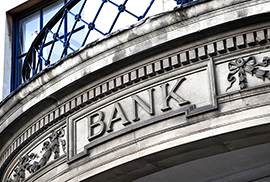This study by Risk Control is the first of three commissioned by the G20 Independent Review of MDBs Capital Adequacy Frameworks. The Panel’s report (find it here) was published in August 2022.
The study presents a quantification of Preferred Creditor Treatment (PCT) for Multilateral Development Banks (MDBs).
PCT denotes the de facto preferential treatment that financially distressed sovereigns give to multilateral institutions including MDBs, Specialised Multilateral Insurers (SMIs) and the International Monetary Fund (IMF). Without this being contractually required defaulting sovereigns try to avoid impairing the debt of multilaterals and, when they fall into arrears, attempt, in restructurings, to repay multilateral debt in full even if other debt claims are written down.
The business model of MDBs involves borrowing low-cost funds in the bond market and lending at low interest rates to Member Country (MC) Sovereigns Obligors (SOs) and Non Sovereign Obligors (NSOs). This business model relies heavily on the PCT that MDBs enjoy.
PCT is widely discussed and many MDB activities would be scarcely possible without it. However, there have been few attempts to quantify PCT. This note uses public data on sovereign debt (i) to quantify the credit performance of four prominent MDBs and (ii) to analyse the magnitude of the PCT they enjoy.
Our main findings are:
- The 1-year sovereign PD averaged across the four MDBs is 0.67%. This is a strikingly low number given that the weighted average ratings of the MDBs in question is single B for 3 banks and low double B for the fourth.
- PD estimates range from 1.68% for sub-Saharan Africa to values of 27 bps or less for other regions.
- Low-income-country PDs are relatively high at 1.73%. Estimated PDs appear not monotonic in income level. This result is not statistically dependable, however, since the number of observations in the sample for High income countries is very few.
- PDs have fallen very substantially over time from an average of 1.30% in the first half of the sample
period to 0.20% in the second half. - Our investigation of PCT suggests that the sovereign PDs of MDB loans are a factor of 3.5 times lower than those experienced by the FC loan or FC bond markets.
- MDB LGDs computed under our assumptions that the economic cost to the MDB is the interest on the interest are around 5 to 10% depending on the estimated PE (which varies across banks) and the level of interest rates. These figures are much lower than the estimates in the literature of LGDs experienced by private sector lenders to sovereigns which range from 35% to 45%.
Read the full study here.


